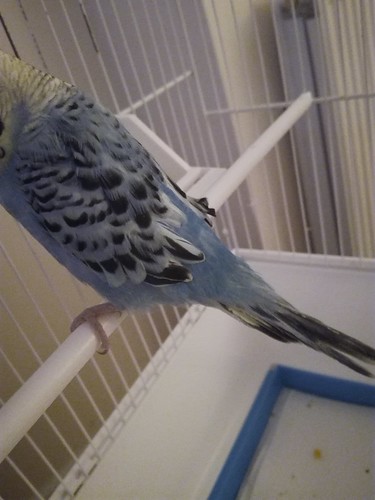As proven in Figure six, right after 7 times of surgical THZ1-R treatment, the expression of phosphor (p) GSK3b was elevated as in comparison with that in unobstructed kidneys of WT mice, which is suppressed in Akt2 KO obstructed kidneys. In get to analyze the part of GSK3b in the expression of Snail and b-catenin in HK-2 cells, we used TGF-b1 or LiCl to handle cells. As shown in Figure seven, TGF-b1-induced expression of Snail and b-catenin (Figure seven). Inhibition of GSK3b with LiCl2 (the inhibitor of GSK3b) also elevated the expression of Snail and b-catenin (Figure seven), indicating that GSK3b deactivation is involed in expression of Snail and b-catenin in the tubule epithelial cells.In this examine, we documented that UUO induced reduce interstitial fibrosis, in Akt2 KO than in WT mice. All the fibrogenic hallmarks of renal fibrosis ended up attenuated in the obstructed kidneys from the Akt2 KO mice, which includes the less of fibronectin and collagen I accumulation. Indicating that Akt2 is included in the development of renal fibrosis. EMT is thought to be a significant element of renal fibrosis. We discovered the amounts of TGF-b1 and p-Smad3 protein were both elevated in obstructed kidneys (Figure 2 C and D). These knowledge recommended that amplified TGF-b signaling was current in kidneys, which would have consequences for epithelial cells integrity in the renal tubules. Moreover, we also discovered that p-Akt (Ser473) was increased in UUO (Determine two A and B). Indicating us that Akt activation may possibly be Akt2 depletion suppresses UUO-induced the expression of Snail and b-catenin in the obstructed kidneys Snail is a essential transcriptional repressor of E-cadherin, contributes to EMT [19], we for that reason assessed the expression of Snail in Determine 3. Akt isoforms and p-Akt (Ser473) protein expressions in the kidneys from wild sort (WT) and Akt2 knockout (KO) mice. Akt2, Akt1, Akt3 and p-Akt(Ser473) protein expression in the obstructed kidneys isolated from WT and Akt2 KO mice 5 day following UUO ended up detected by the western blotting. (A) The expression stages of Akt2 protein in WT mice and Akt2 KO mice by western blotting investigation. (B) The expression amounts of Akt1 in WT mice and Akt2 KO mice by western blotting analysis. (C) The expression amounts of Akt3 protein in WT mice and Akt2 KO mice by western blotting evaluation. (D) The expression levels of p-Akt (Ser473) protein in WT mice and Akt2 KO mice by western blotting examination. GAPDH was utilised as internal loading handle. doi:ten.1371/journal.pone.0105451.g003 Figure 4. Unilateral ureteral obstruction (UUO)-stimulated epithelial-mesenchymal changeover (EMT) was blocked by Akt2 knockout (KO). (A and B) Western blot investigation of p-Smad3 and vimentin protein expression in unobstructed and obstructed kidneys from WT and Akt2 KO mice. (C and D) Immunohistochemistry for E-cadherin and a-clean-muscle actin (a-SMA) in unobstructed and obstructed kidneys from WT and Akt2  KO mice. Magnification: 6200. (E and F) Western blot investigation of E-cadherin and a-SMA protein expression in unobstructed and obstructed kidneys from WT and Akt2 KO mice. GAPDH was utilized as inner loading management. Band intensities have been calculated employing Scion Impression computer software. Data are demonstrated as indicate six SD (n = 6). P,.05, P,.01 compared to the nonobstructive kidney from WT mice P,.05 in contrast to the obstructive kidneys from WT mice. doi:ten.1371/journal.pone.0105451.g004 elicited by TGF-b1 and concerned in loss of tubular epithelial cells in UUO. Firstly, we discovered p-Smad3 expression in the obstructed kidneys of Akt2 KO mice was significantly less as when compared with kidneys from obstructed WT mice, suggesting that Akt2 KO might affect EMT subsequent UUO. Next, the stage of vimentin, E-cadherin and a-SMA was detected and we discovered that Akt2 KO suppressed raises in vimentin and a-SMA, even though loss of E-cadherin was prevented by Akt2 KO (Figure four). Even though Akt2 KO abolished the UUO-induced enhance in vimentin and a-SMA, UUOinduced alteration in E-cadherin were only partially recovered, suggesting that Akt2 signaling is not the only pathway involved in the EMT following UUO. The existing observations even more give perception into the Akt2dependent mechanisms foremost to EMT in vivo. Snail, a zinc finger transcription issue, has been characterized as a key regulator EMT. Many studies have demonstrated that Snail binds to distinct DNA sequences referred to as E-containers in the promoter of the E-cadherin gene to repress transcription of E-cadherin [16].
KO mice. Magnification: 6200. (E and F) Western blot investigation of E-cadherin and a-SMA protein expression in unobstructed and obstructed kidneys from WT and Akt2 KO mice. GAPDH was utilized as inner loading management. Band intensities have been calculated employing Scion Impression computer software. Data are demonstrated as indicate six SD (n = 6). P,.05, P,.01 compared to the nonobstructive kidney from WT mice P,.05 in contrast to the obstructive kidneys from WT mice. doi:ten.1371/journal.pone.0105451.g004 elicited by TGF-b1 and concerned in loss of tubular epithelial cells in UUO. Firstly, we discovered p-Smad3 expression in the obstructed kidneys of Akt2 KO mice was significantly less as when compared with kidneys from obstructed WT mice, suggesting that Akt2 KO might affect EMT subsequent UUO. Next, the stage of vimentin, E-cadherin and a-SMA was detected and we discovered that Akt2 KO suppressed raises in vimentin and a-SMA, even though loss of E-cadherin was prevented by Akt2 KO (Figure four). Even though Akt2 KO abolished the UUO-induced enhance in vimentin and a-SMA, UUOinduced alteration in E-cadherin were only partially recovered, suggesting that Akt2 signaling is not the only pathway involved in the EMT following UUO. The existing observations even more give perception into the Akt2dependent mechanisms foremost to EMT in vivo. Snail, a zinc finger transcription issue, has been characterized as a key regulator EMT. Many studies have demonstrated that Snail binds to distinct DNA sequences referred to as E-containers in the promoter of the E-cadherin gene to repress transcription of E-cadherin [16].